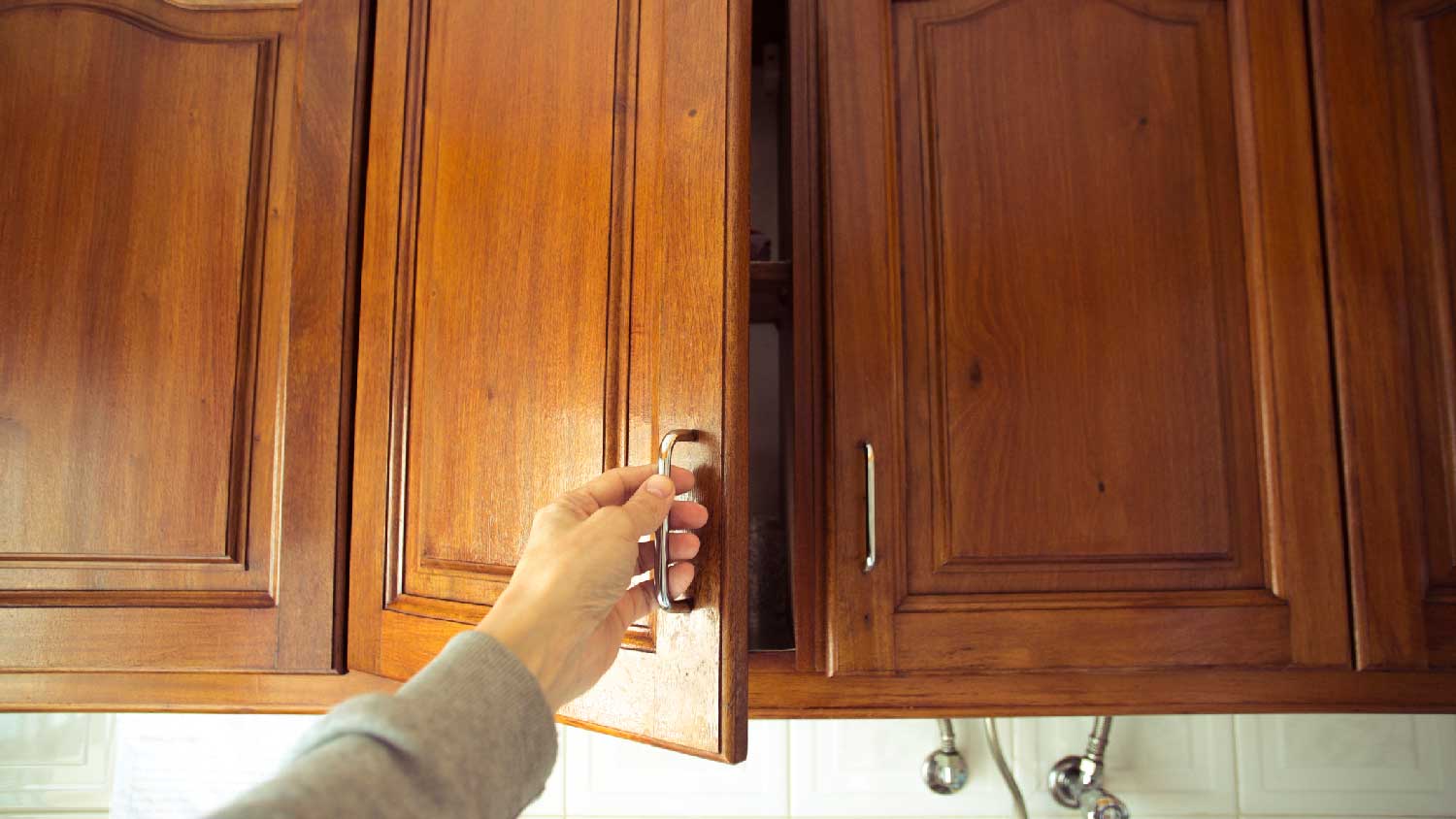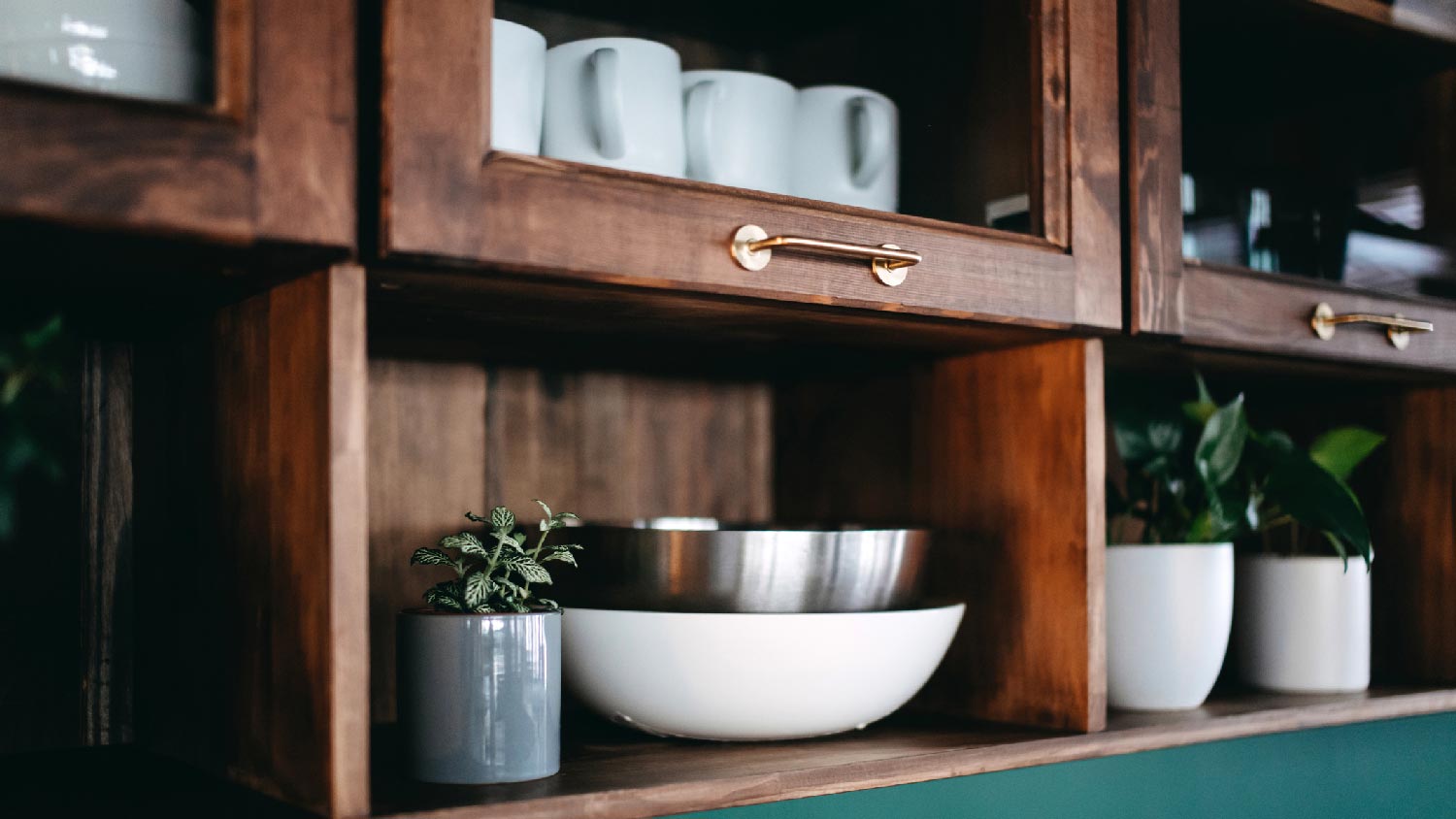Euro Style Cabinets vs. Face Frame: What’s the Difference?
What separates these two cabinet styles is their construction and price tag


Euro style cabinets have a sleek, streamlined look.
Face frame cabinets cost less and are more durable.
Euro style cabinets offer more usable storage space.
Face frame cabinets can be easier to install.
It’s no secret that new cabinets can be expensive, and for good reason: They add form and function to your space and can set the tone for the style of your home. If you’re weighing the pros and cons of Euro style cabinets vs. face frame cabinets, our guide can help point you in the right direction based on your budget and your needs. Whichever route you choose, you’re sure to end up with a kitchen that you’re proud to cook (or order out) in.
Euro Style vs. Face Frame Cabinets: Key Differences
These two types of cabinets are constructed completely differently. In Euro style cabinets, doors and drawers are attached directly to the cabinet box, while the doors and drawers of face frame cabinets are attached to a face frame on the front of the cabinet.
What Are Euro Style Cabinets?
European style cabinets are often referred to as frameless cabinets. Unlike more traditional cabinet styles, Euro style cabinets have doors and drawers that are attached directly to the box using concealed hinges. The doors and drawers are full overlay, so they cover the entire front of the cabinet when closed. This gives the cabinets a sleek, seamless look.
| Pros | Cons |
|---|---|
| Sleek, modern look | More expensive |
| More usable storage space | More susceptible to wear and tear |
| Easier to clean |
Best for:
Those with a higher budget
Modern homes
Homeowners that need lots of storage
Pros of Euro Style Cabinets
Euro style cabinets have become increasingly popular with homeowners because they offer a clean, streamlined look. Because they don’t have face frames, Euro style cabinets are easier to clean, and they boast wider, more accessible openings.
Cons of Euro Style Cabinets
The main downside to Euro style cabinets is that they come at a higher price point than framed styles. This is because Euro style cabinets have thicker boxes made with more lumber to compensate for the lack of a face frame. In addition, because the edges of the doors and drawers extend all the way to the edge of the cabinet box, they’re more likely to get scratched or chipped.
What Are Face Frame Cabinets?

Also called American-style cabinets, face frame cabinets have face frames on the front. These add structure and support to the cabinets and are also what doors and drawers are attached to. Face frame cabinets can be full overlay, partial overlay, or inset.
| Pros | Cons |
|---|---|
| Sturdy construction | Less storage than Euro style |
| Less expensive than Euro style | Can sometimes look dated |
| Easier to install |
Best for:
Traditional-style kitchens
Installation on less-than-perfect walls
Homeowners on a budget
Pros of Face Frame Cabinets
Durable and affordable, face frame cabinets have a traditional look that works with most types of decor (modern kitchens being one exception). The face frame adds support and structure to the cabinet box, helping to prevent racking. As a result, it can be easier to install face frame cabinets in spaces where the walls may not be plumb or the floors and ceilings aren’t perfectly level.
Cons of Face Frame Cabinets
Face frames partially obstruct the cabinet openings, resulting in slightly less usable storage space. And some homeowners find that face frame cabinets look dated compared to the sleek, modern look of Euro style cabinets.
Euro Style vs. Face Frame Cabinets
If you’re having trouble deciding between these two styles, a cabinet maker near you can help advise you. Here’s a look at how they compare when it comes to cost, storage space, and more.
Appearance: Euro Style

Euro style cabinets have a clean, streamlined look that works with nearly any style of decor. Face frame cabinets are more traditional, but can sometimes look dated—and they aren’t a good fit for modern homes.
Durability: Face Frame
Although higher-quality Euro style cabinets compensate for the lack of a face frame with beefier cabinet boxes, in general, face frame cabinets tend to be more durable.
Appearance: Euro Style
Without face frames, the openings of Euro style cabinets are wider. As a result, you get a little more storage space, and it’s easier to pull stuff out and put it away.
Price: Face Frame
Face frame cabinets cost an average of $5,000 to $20,000, while Euro style cabinets range from $6,000 to $30,000. Your final cost will depend on factors like the materials you choose, but in general, face frame cabinets are a more budget-friendly choice.
Ease of Installation: Face Frame

In order for them to stay perfectly aligned and functioning well, Euro style cabinets require a lot of precision—both in how they’re constructed and how they’re installed. Face frame cabinets, meanwhile, are a little more forgiving. The face frame adds structure and helps prevent racking, so face frame cabinets can be installed even if your walls, floors, and ceilings are in less-than-perfect shape.





- Framed vs. Frameless Cabinets: Which Is Right for Your Home?
- How Euro-Style Lighting Can Add Opulence and Intrigue to Any Home
- How To Build Cabinets: 9 Steps to Follow
- 5 Tips for Choosing the Best Kitchen Cabinets
- What Are Inset Cabinets?
- The A-to-Z Guide to Unfinished Cabinets
- Melamine Cabinets vs. Wood: What’s the Difference?
- Where to Put Knobs and Handles on Kitchen Cabinets: Tips to Nail Your Hardware Placement
- What Are RTA Cabinets?
- How To Sand Cabinets for Painting: A Complete Guide










